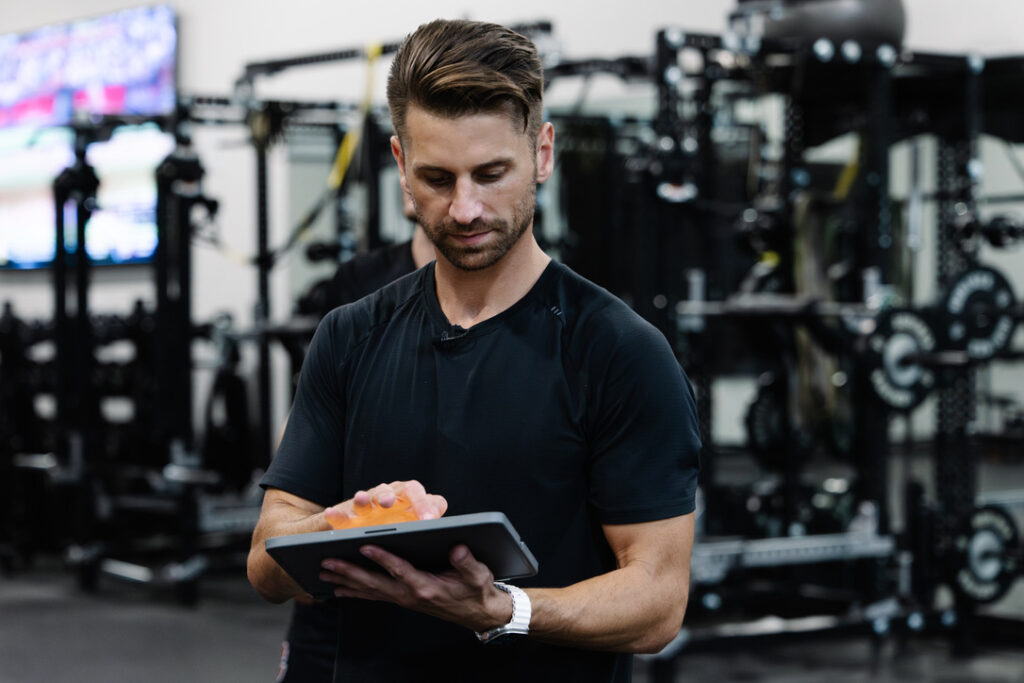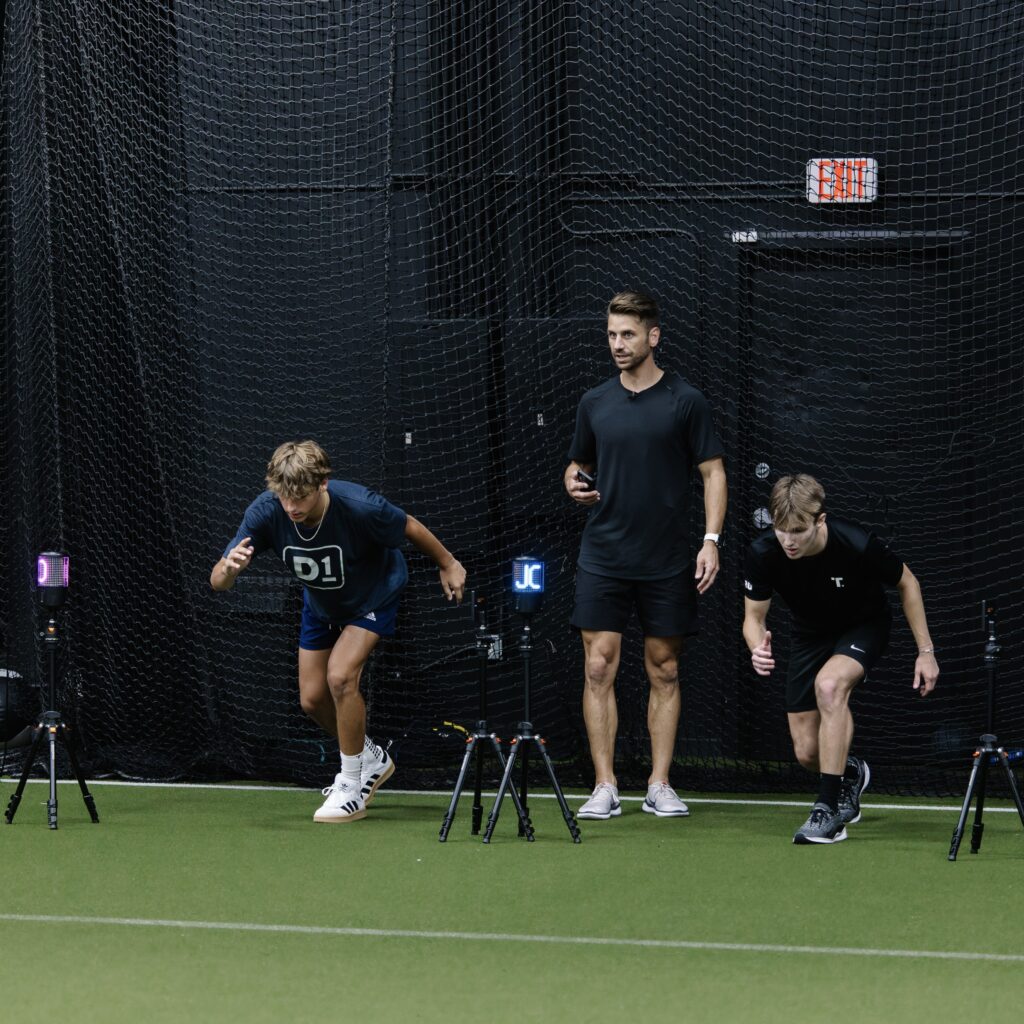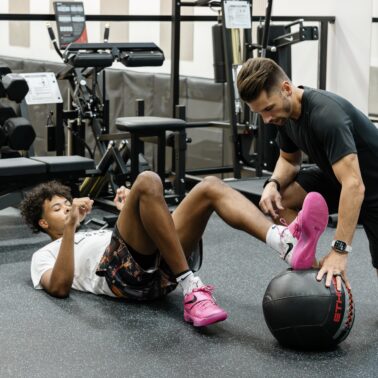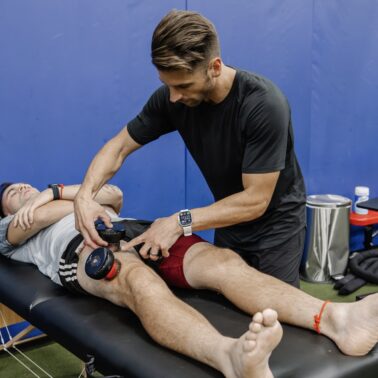Approximate Read Time: 14 minutes + FREE Download
“Return to play and preseason prep aren’t different goals—they’re just different timelines. The 360 Profile simplifies the complex timelines”
What You will learn
- Return-to-play benchmarks double as preseason conditioning standards.
- The 360 Profile links fitness, readiness, and injury prevention.
- Testing doesn’t disrupt training when embedded into sessions.
- Rehab, performance, and longevity share common physiological goals.
- Individualization starts by prioritizing what matters most.
The Problem: Preseason Conditioning is Often a Shot in the Dark
Preseason often feels like a sprint before the marathon. Athletes show up with varying levels of fitness, movement quality, and readiness. Coaches are forced to make snap decisions: Who starts? Who needs extra conditioning? Who’s at risk for injury?
Too often, the answer is guesswork.
In reality, we already have the answers. The same benchmarks we use to clear athletes during return-to-play are the exact data points we can use to build effective, individualized preseason conditioning.
“Return-to-play benchmarks are just preseason standards viewed through the lens of injury.”
When we shift our mindset to view preseason as the ultimate readiness assessment, it becomes clear: the tools we use to rehabilitate are the same tools we use to prepare.

What is the 360 Profile?
The 360 Performance Profile (FREE download after this article) is a comprehensive, evidence-based system for assessing physical readiness across five key areas:
- Strength (e.g., barbell squat, deadlift, farmer’s carry)
- Power (e.g., CMJ metrics, peak force, asymmetry)
- Capacity (e.g., VO2max, RSI-mod, sprint capacity)
- Control (e.g., isometric/isokinetic joint testing)
- Symmetry (e.g., limb asymmetries via force plates or NordBord)
These metrics are drawn from normative research and real-world performance expectations in pro and collegiate sport.
Think of it as your preseason dashboard. If a car has tire pressure, engine diagnostics, and fuel efficiency readouts, the 360 Profile is your human version—a 360-degree view of what’s under the hood.
“A performance profile is not just about collecting data—it’s about directing decisions.”
From Rehab to Readiness: The Bridge is Shorter Than You Think
Injury and illness are the extreme ends of physical underperformance. Yet the criteria we use to clear an athlete post-ACL reconstruction are the same attributes needed to compete safely in preseason:
- Quadriceps symmetry and output
- Hamstring strength and rate of force development
- Energy system readiness (e.g., VO2max)
- Movement control under load and speed
In other words, the same readiness metrics that define “safe to return” also define “ready to compete.”
Embedded testing lets us track this seamlessly within team training environments. No more waiting for testing day. Every lift, jump, and sprint becomes a test.
The 3P Framework: Principles, Process, and Plans
As explained in The 3P Framework, preparation is about:
- Principles: Define what matters (e.g., adequate strength, fitness, movement quality)
- Process: Create repeatable strategies to assess and address deficits
- Plans: Build daily decisions from the data
When you overlay the 360 Profile onto the 3P Framework, you simplify programming and sharpen your focus. Athletes are no longer labeled generally as “out of shape” or “not ready.”
They are now defined by which domain of readiness needs support—and how to get them there.
“Clarity reduces overwhelm. The 3P Framework shows you where to look and what to do next.”
Evidence-Based 360 Profile: What the Research Says
- Barbell Squat Strength: Athletes with a back squat 1RM <2.2x BW (men) and <1.6x BW (women) were significantly more likely to suffer lower extremity injuries.
- Jump Profiling: CMJ power outputs <55 W/kg or asymmetries >10% are red flags for readiness.
- Chronic Load Matters: Athletes with higher chronic training loads and exposure to high-speed running had lower soft-tissue injury risk.
These data points aren’t just academic. They form the foundation of preseason and return-to-play thresholds.
Simplifying Individualization: Build a Priority List with the 360 Profile
The biggest challenge in sport is not the testing—it’s the decision-making.
When you assess 8+ physical traits, the complexity can become paralyzing. That’s where the 360 Profile helps: it filters the noise by ranking each attribute by:
- Severity of deficit
- Relevance to the sport or position
- Impact on performance or injury risk
From there, you address 1-2 priority traits at a time. This matches the “Plans” component of the 3P Framework—a clear sequence, not chaos.
“Every athlete deserves a plan. Not everyone needs a reinvention.”
Using the 360 Profile for Preseason Prep
A collegiate soccer program uses the 360 Profile during offseason testing:
- 15 athletes tested
- 4 players below normative scores in single-leg isometrics
- 3 players with CMJ asymmetries >15%
- 2 players with low hamstring strength on NordBord testing
The training plan?
- Adjust weight room groups based on deficits
- Include embedded jump tests weekly
- Assign specific tempo lifts and eccentrics to targeted players
This is a practical way to create individualization through “buckets” based on measurable data.
Training, Rehab, and Longevity: Same System, Different Outcomes
Whether you’re treating a rehab case, preparing for preseason, or developing a pro for longevity, you’re playing with the same levers:
- Muscle strength and control
- Energy system efficiency
- Joint load tolerance
- Fatigue resistance
The only thing that changes is the context.
“From rehab to readiness, the athlete’s physiology doesn’t change—our strategy does.”
By using a system like the 360 Profile, guided by the 3P Framework, you streamline communication, individualize programming, and ensure athletes are not just available—they’re ready.
conclusion: 360 Profile as a Tool
The 360 Performance Profile isn’t just a testing sheet. It’s a map. And when overlaid with the 3P Framework and embedded into your day-to-day training, it brings clarity to the preseason chaos.
Let’s revisit those 5 key points:
- Return-to-play criteria ARE preseason benchmarks
- The 360 Profile connects health and performance seamlessly
- Testing can live inside training with embedded strategies
- Injury and longevity are managed by the same physiology
- Individualization begins with a priority list, not a guessing game
And remember: “If you don’t know what to measure, you can’t manage it.”
Free Download:
Related Articles:
Related Podcasts:
- Integrating Sports Tech with Rehab ft. Dr. Jess Elis
- How to Integrate Technology to Improve Decisions with Dr. Shireen Mansoori
- ACL Injuries & High-Load Training in Women’s Sport with Dr. Mike Young
References:
- Case MJ, Knudson DV, Downey DL. Barbell squat relative strength as an identifier for lower extremity injury. J Strength Cond Res. 2020;34(5):1249-1253.
- Malone S, Owen A, Mendes B, et al. High chronic training loads and exposure to max velocity running reduce injury risk in elite Gaelic football. J Sci Med Sport. 2018;21(3): 219-225.
- Gabbett TJ. The training-injury prevention paradox: should athletes be training smarter and harder? Br J Sports Med. 2016;50(5):273-280.
- NCAA CMJ Normative Data Study. J Strength Cond Res. 2024.
- Quadriceps Strength Following ACLR. J Orthop Sports Phys Ther. 2022.



